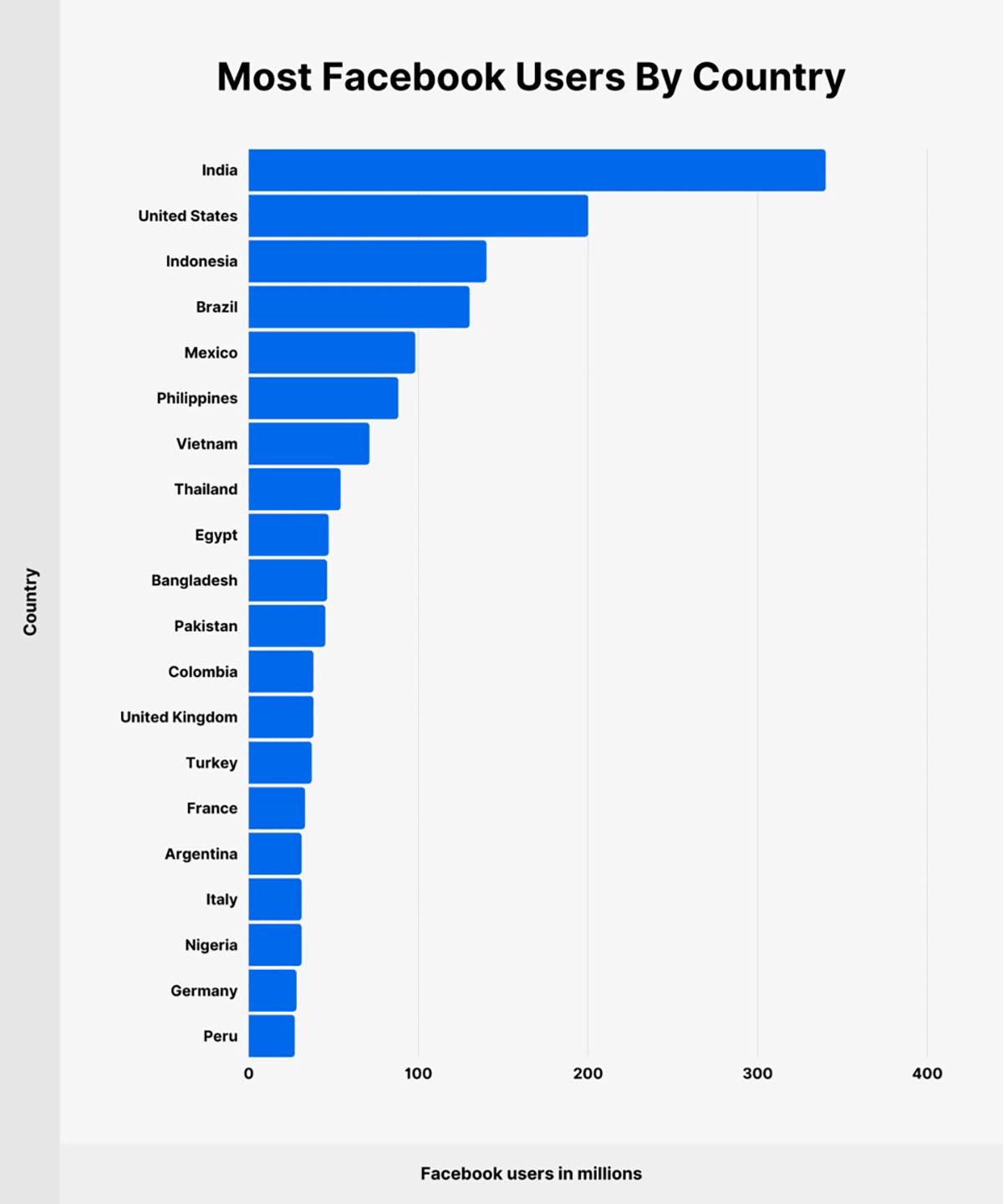Maximizing ROI Through Google Ads and Facebook Ads
Originally published: August 30, 2023 08:35:54 AM, updated: August 30, 2023 08:40:35 AM

In today's digital landscape, where competition for consumer attention is fierce, businesses constantly seek effective avenues to maximize their Return on Investment (ROI). Two such powerful platforms that have revolutionized the advertising space are Google Ads and Facebook Ads. With the potential to reach vast and targeted audiences, these platforms offer unparalleled opportunities for businesses to achieve their marketing goals.
This article delves into the strategies and techniques that can be harnessed to maximize ROI through Google Ads and Facebook Ads. By understanding each platform's unique strengths, identifying the right audience, crafting compelling creatives, and employing data-driven optimization, businesses can unlock the full potential of their advertising campaigns, ensuring a higher ROI and enhanced business growth.
Understanding Google Ads and Facebook Ads
Google Ads and Facebook Ads are two of the most powerful and widely used online advertising platforms, each offering distinct features and targeting capabilities.
Google Ads operates on a pay-per-click (PPC) model, where advertisers bid on specific keywords related to their products or services. In 2021, Google's ad revenue amounted to $147 billion, reflecting the platform's immense popularity among businesses seeking to capitalize on users' search intent.
When users search for those keywords, the ads appear at the top of search engine results pages (SERPs), making them highly visible to potential customers actively searching for relevant information. This intent-based targeting allows advertisers to capture users at the precise moment of interest, enhancing the likelihood of conversion.
Facebook Ads, on the other hand, provides advertisers with a vast network to reach users based on demographics, interests, behaviors, and connections. Facebook's user base continues to grow, with over 2.8 billion monthly active users as of 2021.

The platform's detailed targeting options enable businesses to define their ideal audience and serve tailored ads directly in users' Facebook and Instagram feeds. Facebook's visual nature allows for creative and engaging ad formats, making it an ideal choice for brand awareness and engagement campaigns.
To maximize ROI through these platforms, businesses need to understand their target audience's preferences, behaviors, and online habits. Google Ads is particularly effective for users actively seeking specific products or solutions, while Facebook Ads excels in creating brand awareness and reaching users based on their interests and behaviors.
By comprehending the unique advantages of Google Ads and Facebook Ads, businesses can strategically allocate their advertising budgets, create compelling ad content, and tailor their campaigns to drive higher engagement and conversions. When executed thoughtfully, a combination of both platforms can lead to a comprehensive and effective advertising strategy that maximizes ROI and contributes to business growth.
Setting the Foundation: Target Audience and Goals
Before diving into the intricacies of Google Ads and Facebook Ads, it's crucial to establish a solid foundation for your advertising strategy. This involves defining your target audience and setting clear goals for your campaigns.
- Identifying Your Target Audience: Both platforms offer sophisticated targeting options, but understanding your audience's demographics, interests, behaviors, and pain points is essential. Conduct thorough market research to create detailed buyer personas that represent your ideal customers. This will help you tailor your ads and messaging to resonate with your audience, increasing the likelihood of engagement and conversions.
- Defining Campaign Goals: What do you hope to achieve with your advertising campaigns? Whether it's driving website traffic, increasing sales, boosting brand awareness, or generating leads, your goals will shape your campaign strategies. Ensure your goals are specific, measurable, achievable, relevant, and time-bound (SMART) to track your progress effectively.
- Aligning Platforms with Goals: Google Ads is particularly effective for capturing users with high purchase intent, as it displays ads to users actively searching for specific keywords. This makes it an excellent choice for conversion-focused goals. On the other hand, Facebook Ads are ideal for broader objectives like brand awareness, engagement, and reaching users based on their interests. Ensure your chosen platform aligns with your campaign objectives.
- Leveraging Audience Insights: Utilize data analytics and insights from both platforms to refine your audience targeting and campaign performance. Monitor click-through rates, conversion rates, and cost-per-acquisition metrics to gauge your campaigns' success and make data-driven optimizations.
- Crafting Compelling Ad Creative: Regardless of the platform, your ad creative should resonate with your target audience and align with your campaign goals. Tailor your messaging, visuals, and call-to-actions to address your audience's pain points and encourage desired actions.

By setting the proper foundation with a well-defined target audience and clear campaign goals, you'll create a strategic roadmap for your Google Ads and Facebook Ads campaigns. This alignment will maximize your ROI and ensure your advertising efforts yield the desired results.
Google Ads Strategies
When it comes to maximizing ROI through Google Ads, strategic planning and execution are paramount. Leveraging the right strategies can significantly enhance your campaign's effectiveness and drive higher conversions.
- Keyword Research: Conduct thorough keyword research to identify your industry's most relevant and high-performing keywords. Aim for a mix of broad, exact, and long-tail keywords to capture different levels of user intent. According to recent data, the average click-through rate (CTR) for the first ad position in Google search results is around 7.94%, highlighting the potential of well-targeted keywords.
- Ad Extensions: Utilize ad extensions to provide additional information and entice users to click on your ads. Extensions like site links, callouts, and structured snippets can boost your ad's visibility and encourage higher CTRs. For instance, ads with site link extensions tend to have a 10-20% higher CTR than those without.
- Quality Score Optimization: A higher Quality Score can lead to lower costs and better ad positions. Focus on creating relevant and engaging ad copy that aligns with your landing page content. Google rewards ads that provide value to users with higher Quality Scores.
- Remarketing Campaigns: Implement remarketing campaigns to re-engage users who have previously visited your website. According to industry data, remarketing ads have a click-through rate that is 10 times higher than regular display ads, making them a valuable strategy for nurturing leads.
- A/B Testing: Continuously test different ad variations, headlines, call-to-actions, and landing page layouts to identify what resonates best with your audience. A/B testing can improve your ads' performance and contribute to better ROI.
Integrating these strategies into your Google Ads campaigns allows you to tap into the platform's vast potential for driving targeted traffic and conversions. Data-driven insights and continual optimization will enable you to refine your approach and achieve optimal ROI.
Facebook Ads Strategies
Effective Facebook Ads campaigns require a deep understanding of your target audience's preferences and behaviors. With a variety of ad formats and targeting options, you can tailor your approach to achieve maximum ROI.
- Audience Segmentation: Utilize Facebook's extensive targeting capabilities to segment your audience based on demographics, interests, behaviors, and connections. According to recent data, highly targeted ads on Facebook can have a click-through rate of 89% higher than non-targeted ads, highlighting the importance of audience segmentation.
- Visual Content: Leverage visually appealing and engaging content to capture users' attention in their news feeds. Video content, for example, can lead to higher engagement rates, with videos on Facebook receiving an average of 8 billion daily views.
- Carousel Ads: Utilize carousel ads to showcase multiple products, features, or benefits within a single ad unit. Carousel ads can increase click-through rates by up to 72%, offering a dynamic and interactive way to engage your audience.
- Lookalike Audiences: Create lookalike audiences based on your existing customer data to reach users with similar characteristics and behaviors. Facebook's lookalike audiences tend to have a 3-10 times higher click-through rate compared to regular targeting.
- Ad Frequency Management: Monitor the frequency at which your ads are shown to the same users to avoid ad fatigue. Recent data suggests that maintaining an ad frequency of 1-2 can lead to higher engagement rates and prevent ad burnout.
- Conversion Tracking: Implement Facebook's conversion tracking to measure the effectiveness of your campaigns in terms of actual conversions. Businesses that use Facebook's conversion tracking tend to see a 49% reduction in cost per conversion.
By incorporating these strategies into your Facebook Ads campaigns, you can effectively engage your target audience, drive clicks and conversions, and ultimately achieve a higher ROI for your advertising efforts. Regular monitoring and optimization based on data insights will contribute to the success of your Facebook Ads strategy.
Monitoring and Optimization

Continuous monitoring and optimization are crucial in maximizing ROI through Google Ads and Facebook Ads. Regularly analyze the performance metrics of your campaigns, including click-through rates, conversion rates, and cost per click. Use these insights to identify trends and areas for improvement.
Experiment with different ad creatives, headlines, and call-to-action buttons using A/B testing. Adjust your ad scheduling to target the days and times when your audience is most active. Allocate your budget based on campaign performance, shifting resources to high-performing campaigns.
Optimize your keyword list for Google Ads to ensure relevance and competitiveness. Refine your audience targeting on Facebook by analyzing demographics and behaviors. For optimal engagement, experiment with different ad placements, such as in-feed and stories.
Mobile optimization is crucial, given the prevalence of mobile device usage. Ensure your ad content and landing pages are mobile-friendly to drive higher conversion rates. Continuously refine your approach based on performance data, adjusting strategies as needed to achieve the best possible results.
Common Pitfalls to Avoid
While Google Ads and Facebook Ads offer great potential for maximizing ROI, there are common pitfalls that businesses should be cautious of:
- Overlooking Audience Segmentation: Failing to segment your audience correctly can lead to irrelevant clicks and wasted ad spending. Always define your target audience based on demographics, behaviors, and interests to ensure your ads reach the right people.
- Ignoring Quality Score: In Google Ads, neglecting your ad's quality score can result in higher costs per click and lower ad rankings. Focus on optimizing ad relevance, landing page quality, and expected click-through rate to improve your quality score.
- Poor Ad Copy and Creative: Crafting compelling ad copy and creative content is essential. Neglecting this aspect can lead to low engagement rates and missed conversion opportunities. Invest time in creating attention-grabbing and relevant ad content.
- Neglecting Mobile Optimization: With a significant portion of users accessing ads on mobile devices, ignoring mobile optimization can hinder your ROI. Ensure your ads, landing pages, and website are mobile-friendly for a seamless user experience.
- Lack of Testing and Optimization: Not continuously testing and optimizing your ad campaigns can limit your ROI potential. Regularly analyze performance metrics, adjust targeting strategies, and experiment with ad variations to refine your campaigns.
- Ignoring Analytics Data: Neglecting to analyze performance metrics and insights can prevent you from making informed decisions. Leverage the data provided by both platforms to identify trends, areas for improvement, and opportunities to enhance your ROI.
- Neglecting Landing Page Experience: Sending users to a generic or irrelevant landing page can lead to high bounce rates and lost conversions. Ensure that your landing pages are aligned with your ad content and provide a seamless user journey.
By avoiding these common pitfalls, businesses can enhance their ROI through Google Ads and Facebook Ads, ensuring that their advertising efforts yield the desired outcomes and contribute to overall business growth.
Conclusion
Maximizing ROI through Google Ads and Facebook Ads requires a strategic approach that combines understanding your target audience, leveraging platform-specific strategies, and continuous monitoring and optimization. Both platforms offer unique advantages: Google Ads captures users with intent, while Facebook Ads excels in audience targeting and engagement. By setting clear goals, tailoring your ad content, and analyzing performance data, businesses can unlock the full potential of these advertising channels. Remember, achieving a higher ROI isn't a one-size-fits-all approach but a dynamic process that adapts to changing trends, user behaviors, and market conditions. With the right strategies and careful execution, businesses can elevate their online presence and achieve sustainable ROI growth.
Join over 130,000 SEO and Google Ads experts. We provide a community to help you engage and learn from industry experts and influencers. Join Now
What if your entire business could run itself — and your work hours got shorter?